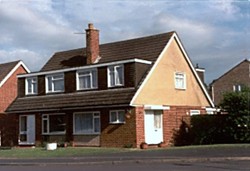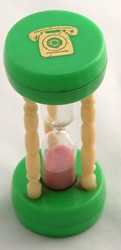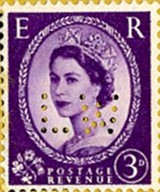

How much did things cost in the 1960s?

Are things more expensive today than the were in the 1960s? We look at a few everyday items and compare prices, allowing for inflation.
People were a lot poorer in the 1960s. The average weekly pay packet was less than £10 per week. Allowing for inflation that is £150 in today's money. Today average weekly earnings are more than £500.
Housing
Houses were a lot cheaper in the 1960s than today:
| Year | Cost | In today's money |
|---|---|---|
| 1960 (first quarter) | £2,189 | £33,000 |
| 1969 (last quarter | £4,312 | £47,500 |
House prices rose faster than inflation in the 1960s. They were still much more affordable than today. Lenders were more cautious. Banks and building societies lent smaller multiples of income and would only consider a husband's income, not his wife's.
Read more about houses in the 1960s.

Telephone calls
Only one in five households had a telephone in the 1960s.
You paid a quarterly rental of £3 10s (or £3.50) and you paid for each call you made.
| Cost | In today's money | |
|---|---|---|
| Quarterly rental | £3 10s (£3.50) | £42 |
| 6 minute local call at peak time | 2d (less than 1p) | 10p |
| 12 minute local call in evening | 2d | 10p |
| 3 minute trunk call (60 miles) in evening | 2 shillings (10p) | £1.20 |
Source: Telephones and the private subscriber by Michael Dunne, pages 6-8, published by The International Organisation of Consumers Unions, 1967.
People thought telephone calls were more expensive than they were. They sometimes bought a telephone timer, like an egg timer, to make sure they did not talk for too long on the 'phone.
Today most people combine telephone with broadband and other services. Telephone only packages are still available though. The cheapest I could find was with the Post Office. Line rental is £39 per quarter and all calls 15p per minute (as of March 2019).
Line rental is a bit cheaper today. Local calls were cheaper in the 1960s, but long distance calls dearer.
Verdict: 'Phone deals are only slightly better today than in the 1960s.
Newspapers
The Daily Mirror was Britain's most popular paper in the 1960s. The Daily Express came second and the Daily Telegraph third.
The UK Government's Prices and Incomes Board controlled the prices of newspapers in the 1960s. It is strange to see that newspapers in the 1960s had the same price.
- Daily Mirror - 1960 (2½d) 1969 (5d)
- Daily Express - 1960 (2½d) 1969 (5d)
- Daily Telegraph - 1960 (2½d) 1969 (5d)
In today's money newspapers prices increased from 15p in 1960 to 22p in 1969.
Today newspapers are much more expensive:
- Daily Mirror - 75p
- Daily Express - 90p
- Daily Telegraph - £2
Source: Tesco, prices as of March 2019
Newspaper circulation has halved since the 1960s. Newspapers have to compete with online sources of news.
Verdict: Newspapers were much cheaper in the 1960s than today.

Posting letters
At the beginning of the 1960s, it cost just 3d (or just over 1p) to post a letter in the UK. The GPO (General Post Office) increased the cost to 4d in 1965. In 1968 the GPO started a new two-tier system. You could still post a letter for 4d, but if you paid 5d it was more likely to be delivered the following day.
| Post Service | 1968 cost | Adjust for inflation | Cost today |
|---|---|---|---|
| Second class (4d) | 4d | 19p | 58p |
| First class (5d) | 5d | 24p | 67p |
Verdict: Posting a letter was much cheaper in the 1960s than today.
Television
Televisions were expensive in the 1960s. A black and white set cost cost about £70 (or over £1000 allowing for inflation).

Colour TV started in 1967. A colour TV set was very expensive. In 1968 a Baird 701 cost £279, or £3200 in today's money. TV sets in those days were unreliable, so you would have to budget for some high repair bills and an extra £5 for a colour television licence.[1]
Many people chose to rent rather than buy a TV in the 1960s. If you rented a colour set it cost from 30s to 40s a week. (£1.50 to £2). In today's money that would be £17 to £23.
Verdict: Televion, especially colour TV, was much dearer in the 1960s than today.
Groceries
Typlical groceries people bought in the 1960s were:
| Item | Cost 1965 | In today's money | Typical price today |
|---|---|---|---|
| Bread (large loaf) | 1s 2½d | £1 | 59p to £1.10 |
| Butter (1lb) | 1s 3d to 2s 10d | 80p to £1.81 | £3.45 (500g) |
| Margarine (1lb) | 1s 3d to 2s 10d | 80p to £1.81 | £1.80 (500g Flora Spreadable) |
| Back bacon (pre-packed, smoked per lb) | 4s 10d to 7s 10d | £3.09 to £5 | £2.39 to £4.50 (500g) |
| Eggs - 1 dozen | 3s 8d to 4s 6d | £1.22 to £2.87 | £1.80 to £3.00 |
| Evaporated milk | 1s to 1s 4d | 63p to 85p | 70p to £1.20 |
| Baked beans (16oz tin) | 9d to 1s 3d | 48p to 80p | 75p |
| Corned beef (12 oz tin) | 1s 11d to 4s 1d | 69p to £1.12 | £2.60 (340g) |
| Cornflakes (12 oz) | 1s 4d to 1s 10d | 85p to £1.17 | £1.30 (375g Sainsbury's SO) |
| Sugar (2lb) | 1s 3d to 1s 9d | 80p to £1.12 | 75p (1kg Sainsbury's) |
| Tea (loose leaf PG Tips ¼lb | 1s 4½d to 1s 9d | 85p to £1.23 | £2 for 250g (approx ½1b |
| Scouring powder - Ajax (large tin) | 1s 4d | 85p | Ajax 396g - £1.99 |
Many of these 1960s staples are dearer today. That is probably because they are less popular. Loose leaf tea is a minority product today. Most people use margarine instead of butter.
Verdict: Most 1960s' staple groceries are dearer today. For more about food prices see Food prices in 1969.

Writing a cheque
Banking is one service which is much cheaper today than it was in the 1960s. Bank charges had an air of mystery about them.
There was a 2d stamp duty payable on every cheque. The Treasury dropped this tax when Britain switched to Decimal Currency in 1971.
The banks also had their own charges over which the manager had discretion.
There were five big banks in the 1960s. Barclays and Lloyds are familiar. In the 1960s there were also Midland (HSBC today), Westminster and National Provincial Banks. These last two merged to form the NatWest Bank.
How much you paid for each transaction depended on how much money you kept in your current account and how much banking you did. If your balance was less then £50 (or £600 in today's money) you could expect to pay about 8d per cheque. (or 41p in today's money). Going back to the 1960s would be quite shock for most of us who are used to free banking.
If you had more than £200 (or £2400 in today's money) you paid no charges to the bank. But you still paid the 2d stamp duty.
Source: 'Bank accounts' in Which?, published by the Consumers' Assocation 7 September 1967, pages 279-286

Verdict: Banking is much cheaper today than it was in the 1960s.
Motoring
The cost of a gallon of petrol increased from 4s 8d (23p) in 1960 to 6s 6d (33p) in 1969. This increase was down to fuel duty which rose from 2s 6d (1960) to 4s 6d (1969). Today a gallon of petrol costs £5.68. Fuel duty is £2.63 per gallon.
Road fund licence in 1965 was £17 10s per year. In today's money that is £223. [2]
Motorist also needed to pay 5s (25p) per year for a driving licence. [2]
See also: How much did cars cost in the 1960s?
A made-to-measure suit
In the 1960s most men went to a tailor to have a suit made. That sounds an extravagance today, but economies of scale meant prices were reasonable.
A suit from Montague Burton, Britain's largest tailoring chain, cost around £24. That's about £300 in today's money.

Transistor radio
The pocket transistor radio was everyone's favourite gadget in the 1960s. By the middle of the decade cheap imports from Hong Kong and Japan had killed off the UK industry. A cheap radio from Woolworths (made in Hong Kong, of course) cost £3 12 3d. In today's money that would have been more than £40. It came with a fancy name, the Jupiter Six-de-luxe and a leather carrying case. The cheapest UK-made alternative, the Philips Popmaster Mk2, cost more than twice as much at £7 19s 6d.
Verdict: Although considered cheap at the time, pocket transistor radios were expensive in the 1960s.
Train fares
In the 1960s train fares were much simpler. There was only one railway operator, British Rail. There were First and Second Class tickets and a few cheap fare options, but there was not the multiplicity of fare choices available today.
These are a few examples:
- 1965 Manchester to London - Off-Peak day return £2 12s
- 1965 Manchester to London - Ordinary day return (Second Class) £5
- 1968 London to Birmingham - First Class single - £6
- 1968 London to Birmingham - Second Class single - £3 18s
- 1968 London to Paris (train and ferry, sharing a cabin) - £9 18s
- 1968 London to Bournemouth - First Class return - 53s
- 1968 London to Bournemouth - Second Class return - 35s
Read more about historic prices and inflation
- How much did things cost in the 1950s?
- How much did things cost in the 1970s?
- How much did things cost in the 1980s?
- How much did things cost in the 1960s - USA?
- How much did things cost in 1960?
- How much did things cost in 1961?
- How much did things cost in 1962?
- How much did things cost in 1963?
- How much did things cost in 1964?
- How much did things cost in 1965?
- How much did things cost in 1966?
- How much did things cost in 1967?
- How much did things cost in 1968?
- How much did things cost in 1969?
References
[1] 'Colour TV Rent or Buy' in Which? published by the Consumers' Association, 11 January 1968, pages 13-16
[2] 'Co-Driver, the AA motorists' companion', pages 294-295, published by The Automobile Association, 1965.
By Steven Braggs, March 2019


Comments
Not comparing like with like, bread was mainly small bakeries and I well remember my grandmother coming back from our local village shop in a real state, she was constantly repeating 'shilling a loaf!' And I was born in 58, so I had to be 9 or 10 to remember that and she only bought bakers bread not the packet stuff!
How much would a two up two down no bathroom had an outside loo cost to rent in 1965 thankyou
completely informative article thank you for sharing
<a href="https://www.a1bracknelltaxi.co.uk/"> A1 Bracknell Taxi </a>
CAN ANYONE TELL ME HIW MUCH A BAG OF COAL WAS APPROXIMATELY IN THE 1960’s?